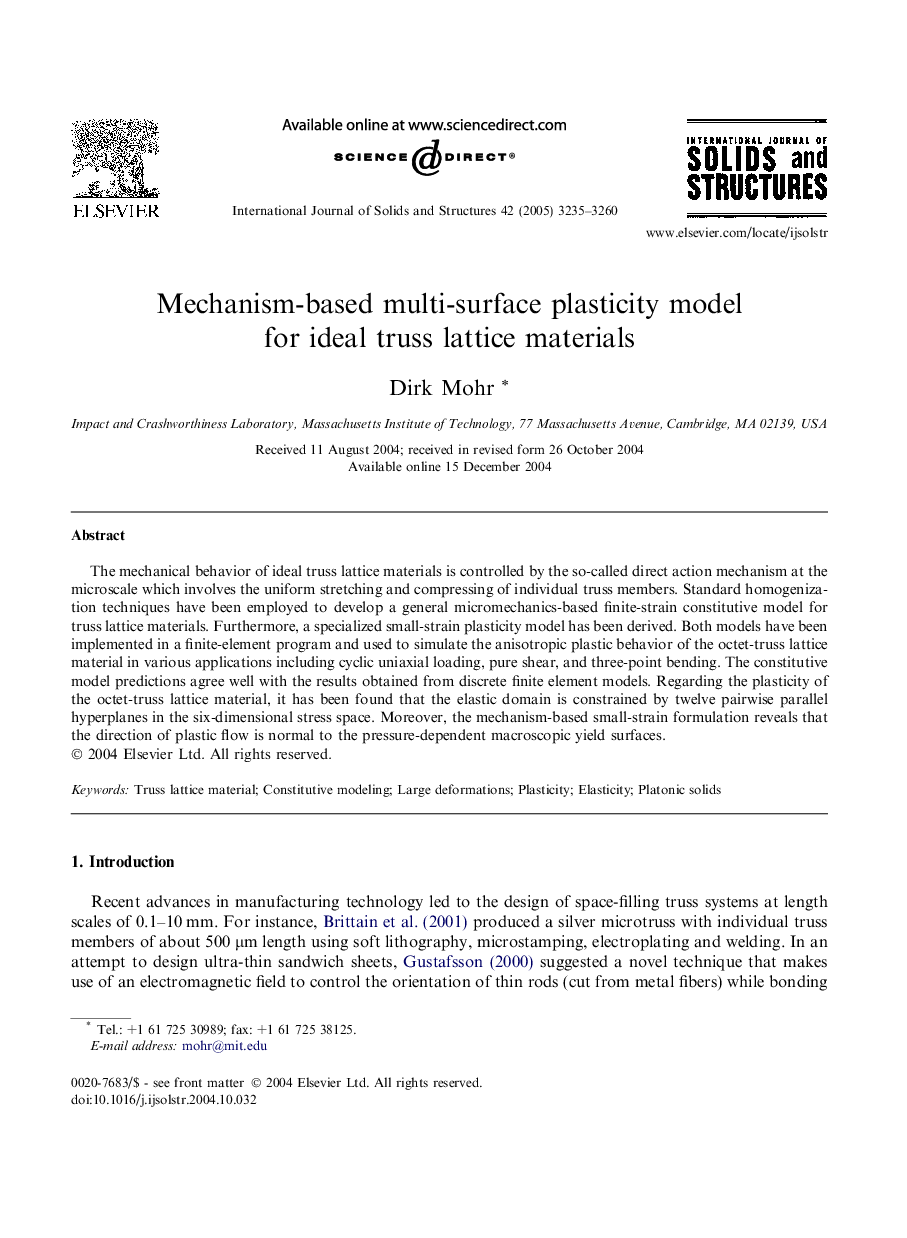| Article ID | Journal | Published Year | Pages | File Type |
|---|---|---|---|---|
| 9639661 | International Journal of Solids and Structures | 2005 | 26 Pages |
Abstract
The mechanical behavior of ideal truss lattice materials is controlled by the so-called direct action mechanism at the microscale which involves the uniform stretching and compressing of individual truss members. Standard homogenization techniques have been employed to develop a general micromechanics-based finite-strain constitutive model for truss lattice materials. Furthermore, a specialized small-strain plasticity model has been derived. Both models have been implemented in a finite-element program and used to simulate the anisotropic plastic behavior of the octet-truss lattice material in various applications including cyclic uniaxial loading, pure shear, and three-point bending. The constitutive model predictions agree well with the results obtained from discrete finite element models. Regarding the plasticity of the octet-truss lattice material, it has been found that the elastic domain is constrained by twelve pairwise parallel hyperplanes in the six-dimensional stress space. Moreover, the mechanism-based small-strain formulation reveals that the direction of plastic flow is normal to the pressure-dependent macroscopic yield surfaces.
Related Topics
Physical Sciences and Engineering
Engineering
Civil and Structural Engineering
Authors
Dirk Mohr,
